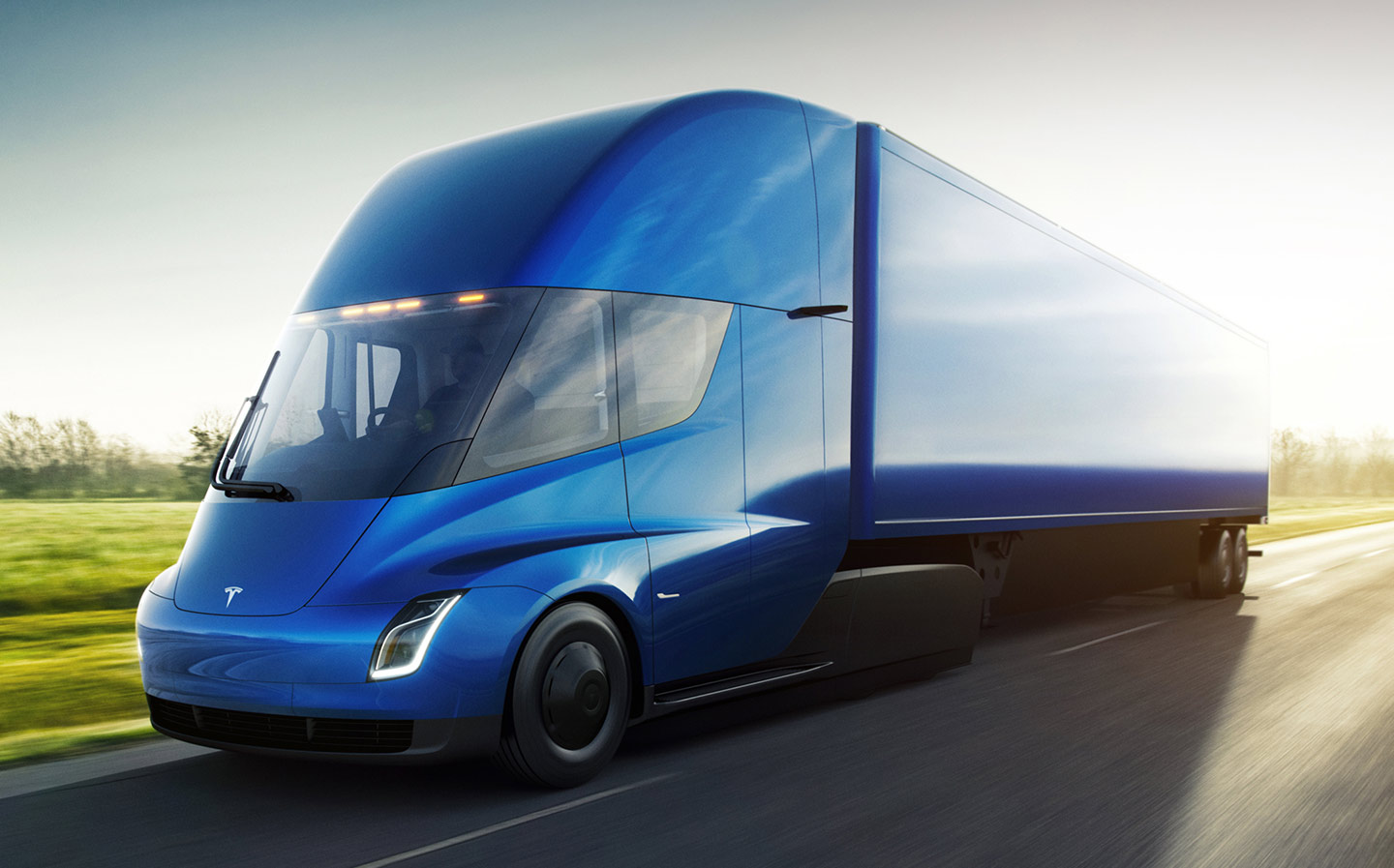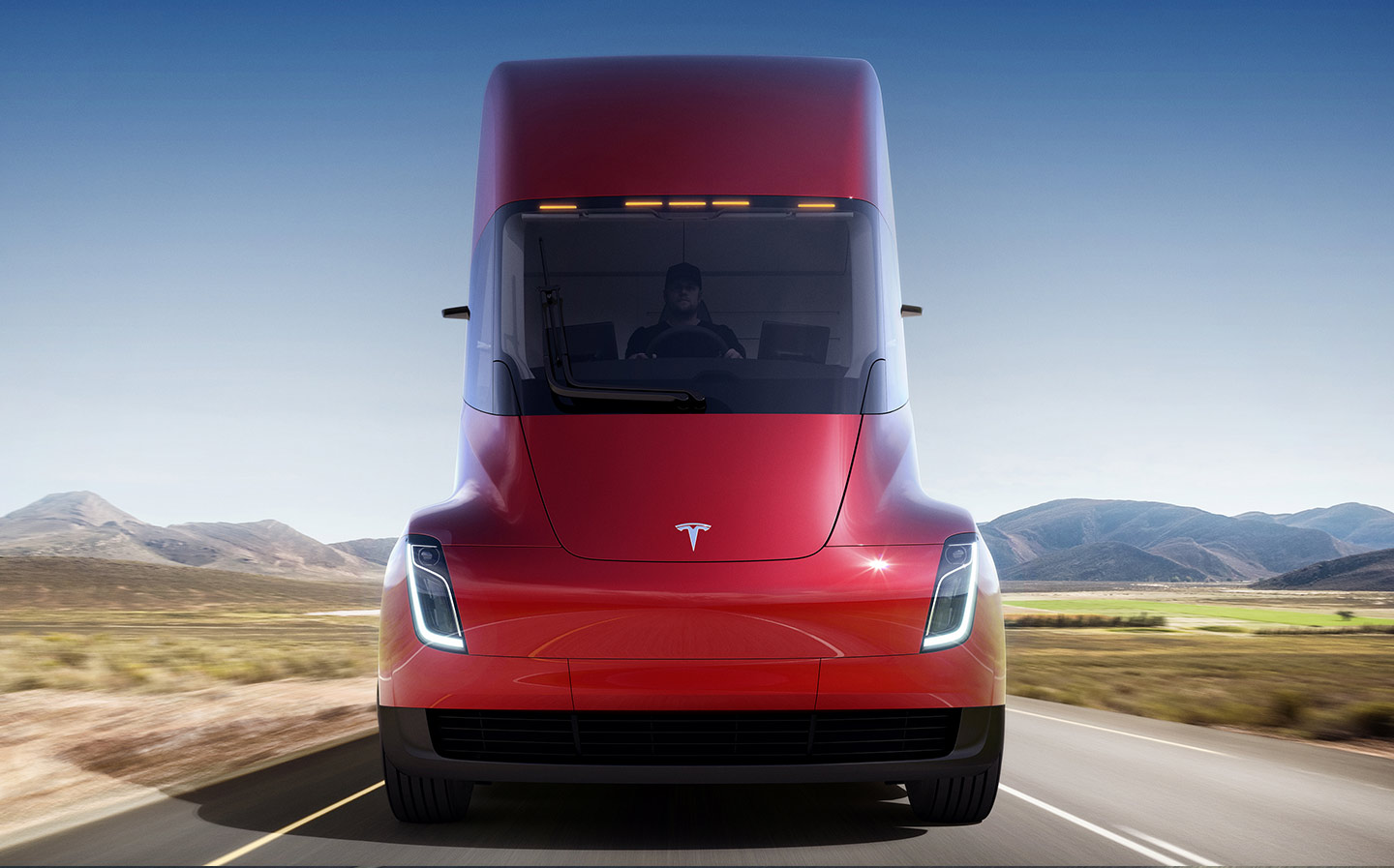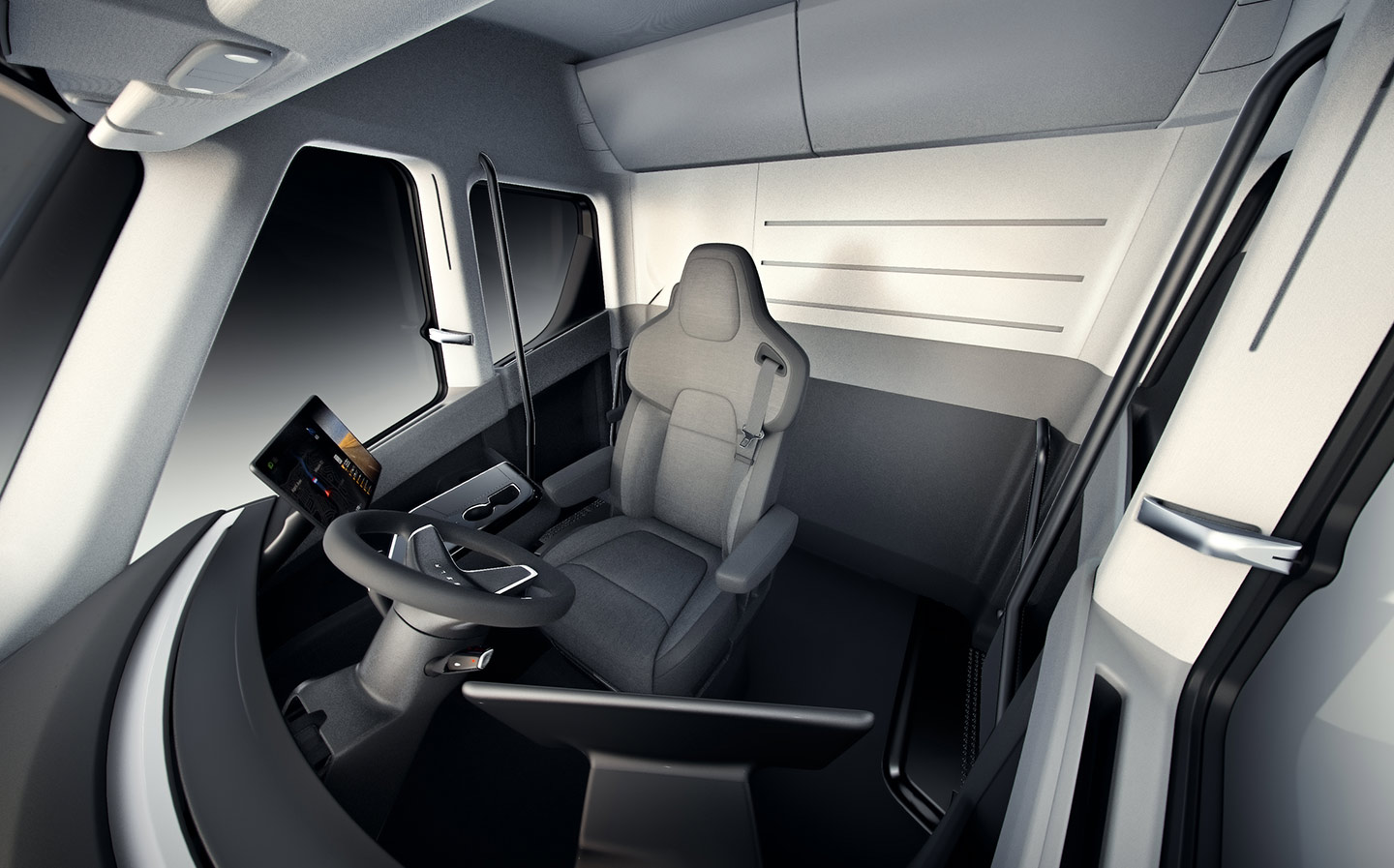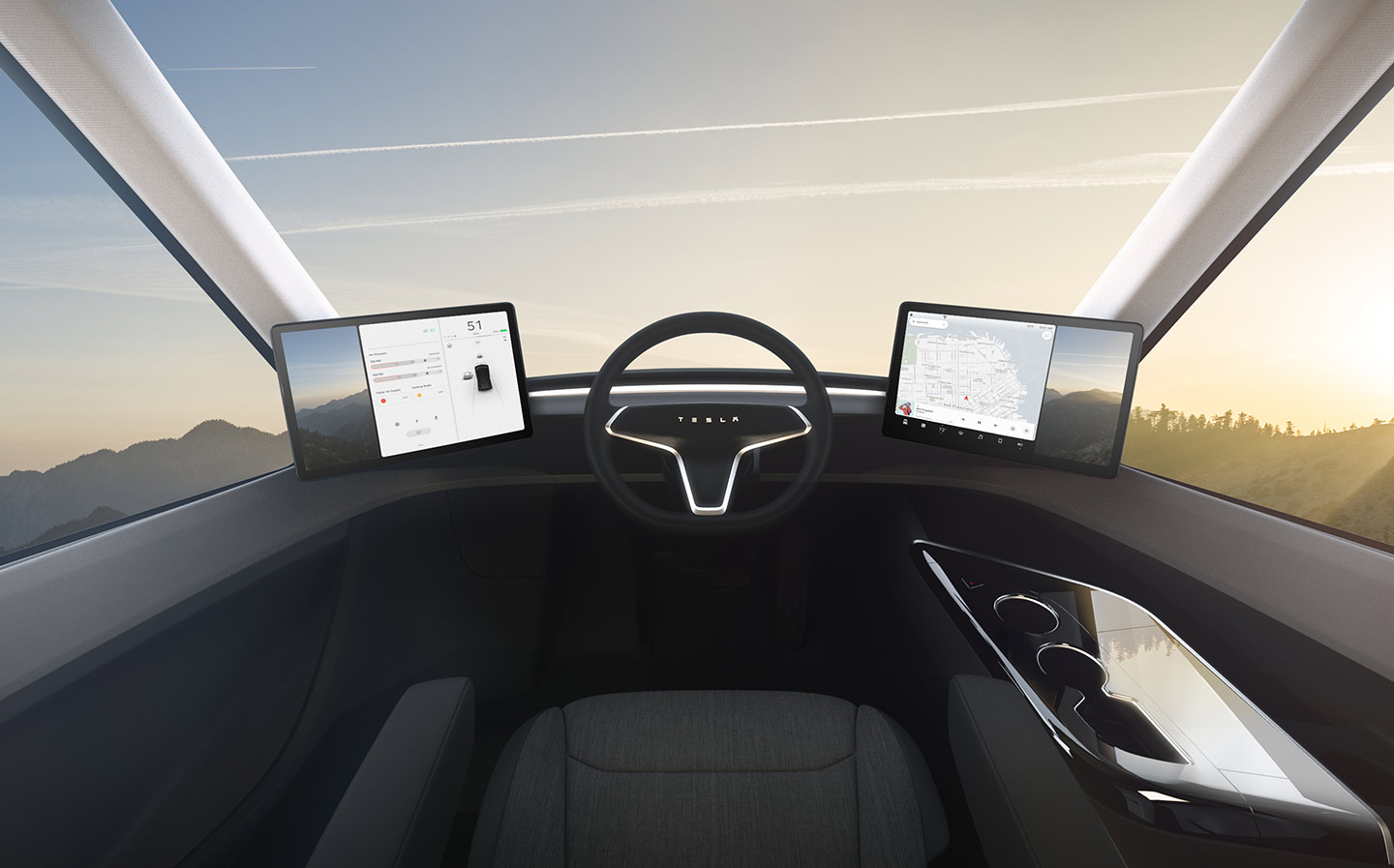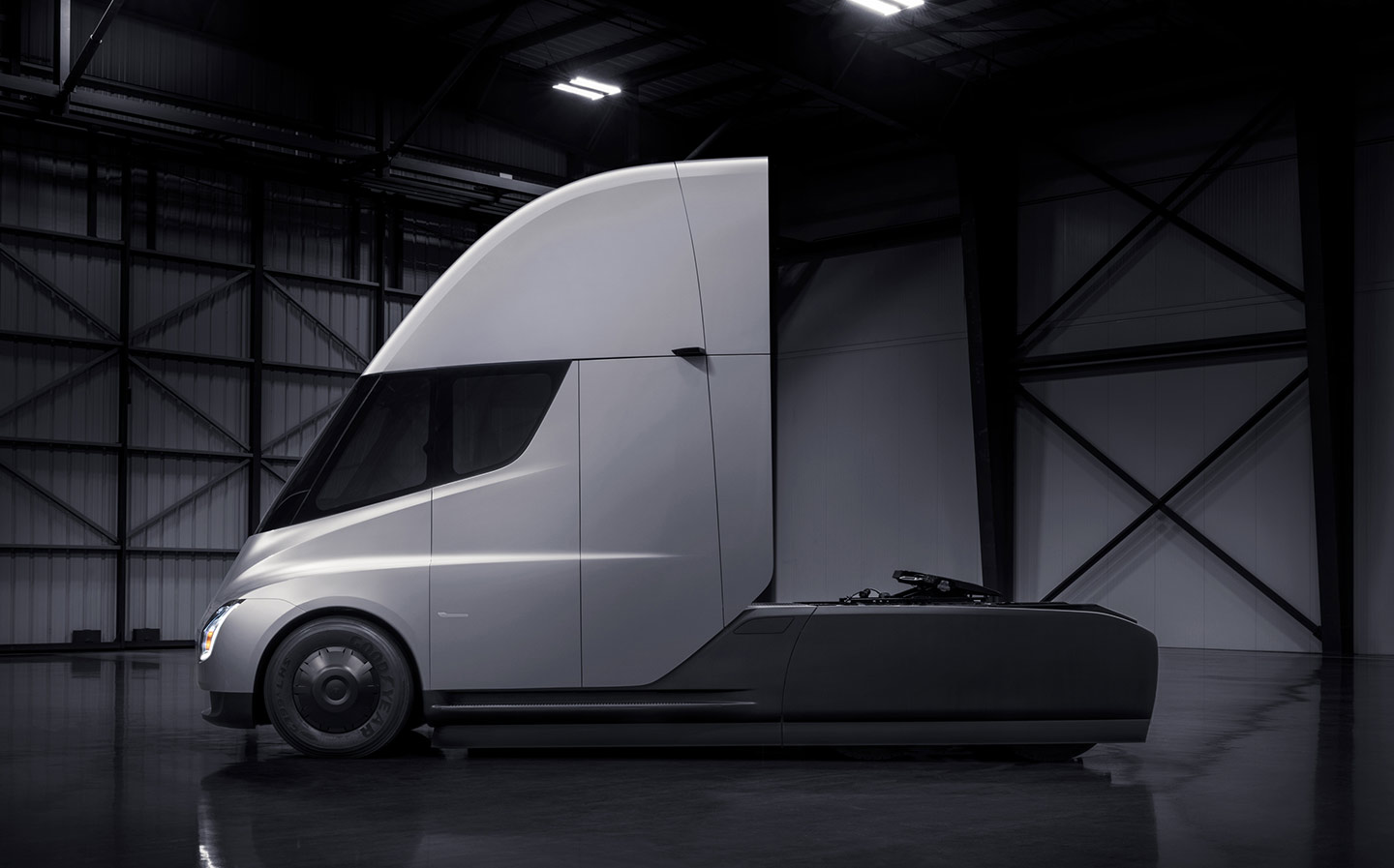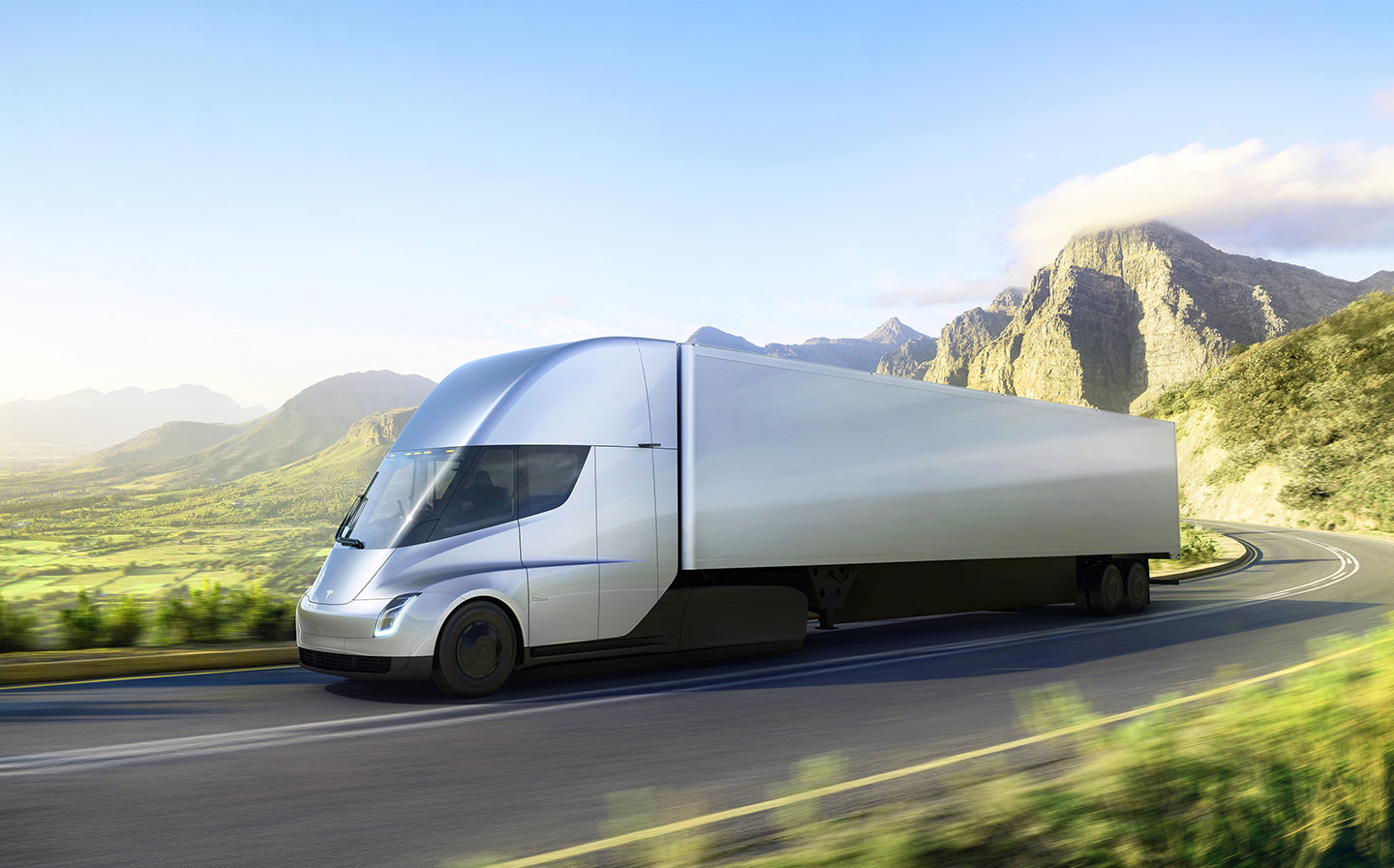Behind the wheel of the Tesla Semi: the electric lorry with 500 miles of range and Autopilot
0 to 60mph in five seconds
I’M SITTING in the form-fitting driver’s seat of Elon Musk’s most powerful electric vehicle, flanked by high-definition touchscreens and with Tesla’s smartest self-driving technology just a finger twitch away. Just one thing is missing: a CB radio.
The Tesla Semi, unveiled on Thursday night in Los Angeles (before shock news of the new Roadster), is Musk’s brave move to propel long-haul trucking into the 21st century. Smart, sexy, sustainable and almost silent, the Semi is everything today’s pollution-belching diesel 18-wheelers are not. Driving was given access to a working Semi prototype shortly before the launch.
Arriving at the event in a Semi, Musk said: “We wanted to make a vehicle that feels incredible, that accelerates like nothing else.” Without a trailer behind it, the Semi can zip from 0 to 60mph in just five seconds. Even fully loaded, it can reach 60mph from standstill in 20 seconds, we’re told.
Browse NEW or USED cars for sale
With no gears to shift and a single, centrally positioned seat that could have come straight from a jet fighter, the electric Semi is not so much driven as piloted – or Autopiloted. The Semi uses the same Autopilot technology as Tesla’s cars, including cameras, computers, radars and ultrasonic sensors. These enable semi-automated driving, on selected motorways at first but, one day, potentially from dock to depot.
Although robot lorries would threaten America’s legions of long-distance truckers, haulage companies are likely to welcome the technology as they struggle with an aging and shrinking pool of drivers. The American Trucking Associations (ATA) estimate that there is a shortage of nearly 50,000 drivers today, rising to 175,000 by 2025.
Another selling point is that despite costing more than a comparable diesel truck up front – although Musk did not say exactly how much more – it boasts much lower running costs. Tesla will sell truckers electricity at wholesale prices and, like Tesla’s cars before it, the Semi uses regenerative braking to feed power back into its lithium ion battery packs.
“The Semi will be able to recharge in about half an hour using a new generation of high-powered charging stations called Megachargers”
If three Semi trucks travel closely together in an energy-efficiency convoy, using the Autopilot technology, Musk promised that their cost per mile would even beat trains. “It’s not just economic suicide to drive a diesel truck, it’s economic suicide to use rail,” he said.
The Semi will be able to recharge in about half an hour using a new generation of high-powered charging stations called Megachargers. A single charge will propel the Semi 500 miles, which is enough to cover over 60% of typical truck trips in the US, according to the American Transportation Research Institute.
For extra green credentials, the Megachargers will be powered by solar panels, also made by Tesla. “Your truck will be running on sunlight,” said Musk.
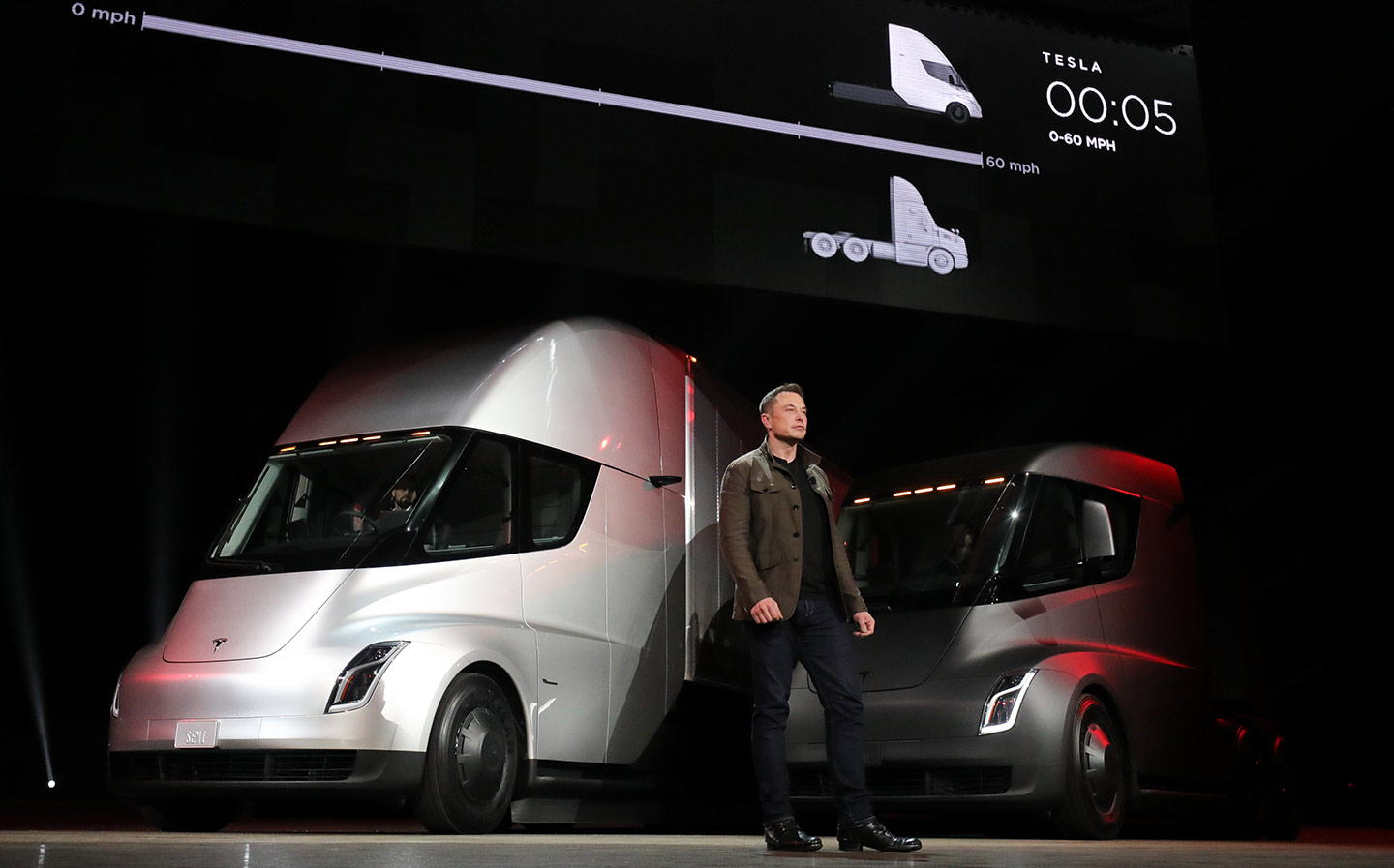
Elon Musk at the Tesla Semi unveiling
Tesla says that the Semi will also be safer than any other heavy-duty truck on the market. Its battery pack is armoured against impacts, and sensors can detect and prevent jack-knifing. Surround cameras replace side mirrors, eliminating blind spots and automatically alerting the driver to hazards.
Tesla only began developing the Semi two years ago, using multiple components from its predecessors. The battery packs are similar to those found in Tesla’s energy products, while the Model 3 will supply its door handles, touchscreens and four motors to drive each of the Semi’s four rear wheels.
To further woo traditional truckers, Musk said that Tesla would guarantee the Semi would not break down in its first million miles on the road. It can make that promise, he said, because it had no transmission or brakes to wear out. Even if one or two of its electric motors fail, the Semi will still out-perform one of today’s diesel trucks.
Musk said that the Semi would go into production in 2019, and promised the first trucks within two years. However, Tesla’s mass market Model 3 is still going through what Musk calls “production hell”, and Musk’s surprise announcement, a new version of its original sporty Roadster, is due hot on its heels in 2020.
Tweet to @meharris Follow @meharris
Elon Musk claims 250mph, 620 miles per charge for new Tesla Roadster


